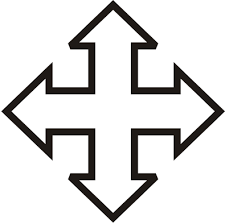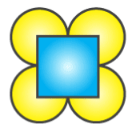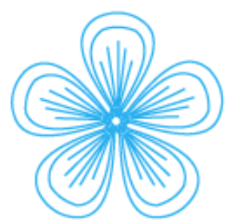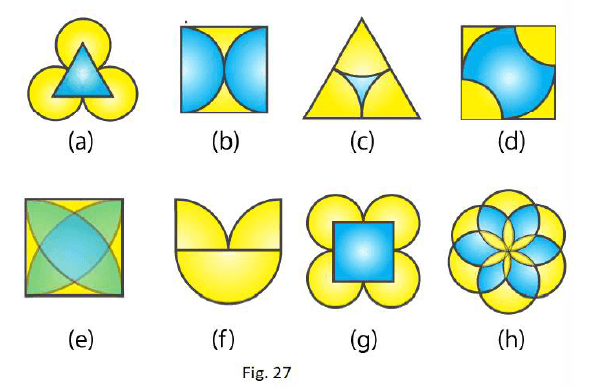Write the following translation using its notation (algebraic formula):
A(-3, -4), B(-1, -5)
A'(3, -4), B'(5, -5)
(x,y) -> (x + 6, y)
Find the new coordinates of (3,-2) after you reflect the point over the y-axis.
What is (-3,-2)?
Find the new coordinates of (5,4) after you rotate the point with 180º.
What is (-5, -4)?
True or False: A dilation does not produce a congruent image.
True - A dilation's image is not congruent to its pre-image because it does not preserve the size of the shape.
 Does the figure below have reflectional symmetry, rotational symmetry or both?
Does the figure below have reflectional symmetry, rotational symmetry or both?
Reflectional symmetry only
Write the notation of point (x,y) after it moves 3 spots to the left and 7 spots up.
What is (x-3,y+7) OR
<-3, 7>
Write the notation (formula) of point (x,y) after it is reflected over the y-axis.
What is (-x,y)?
Write the notation (formula) of point (x,y) after it rotates 90º?
What is (-y,x)?
What is the new image of G(8, 10) if it undergoes a dilation by a factor of 25?
G'(200, 250)
This figure has rotational symmetry. Name the order and magnitude.
Order = 4; Magnitude = 90 degrees
Describe in words the translation for this notation: (x,y) --> (x + 8, y + 4)
What is a translation of 8 units to the right and 4 units up?
A picture with one point (-3,4) was reflected over the line x=-2. What should be the new coordinates of the point?
What is (-1,4)?
Figure QRST has vertices Q(2,-1), R (6,-1), S(6,-3) and T(2,-3). Which will be the coordinates of vertex R after the rectangle is rotated 90º counterclockwise about the origin?
What is (1,6)?
What is the scaling factor if point A(-2, 3) dilates to point A'(-1, 1.5)?
k = .5 or 1/2
How many lines of symmetry are there for the following image? What are they? 
What is 4? Horizontal, Vertical, Diagonal, Diagonal
Find the new coordinates of ∆LMN after a translation of 6 units to the right and 4 units down. L(0,3) M(6,4) N(3,9)
What is L'(6,-1), M'(12,0), N'(9,5)?
Graph line segment DE after a reflection over the line y=1. D(2,3) E(-1,2)
What is D'(2, -1), E'(-1,0)?
Graph ∆JKL after a rotation of 180º about the origin. J(5,6) K(7,9) L (1,2)
What is J(-5,-6), L(-7,-9), L(-1,-2)?
Dilate the pre image with the scaling factor k = 1/3
A(9, -6) B(12, 3) C(0, -3)
A'(3, -2) B'(4, 1) C'(0, -1)
 This figure has rotational symmetry. What is the order and angle of rotation?
This figure has rotational symmetry. What is the order and angle of rotation?
Order = 5; Degree of rotation = 72 degrees
The new coordinates of (3,-2) if you translate it right 1 and down 2 and then reflect it over the x-axis.
What is (4,4)?
Line segment CD was reflected over the y-axis and then rotated 180 degrees. The endpoints of the image are C' (4,0) and D' (6,2). What are the coordinates of the endpoints of the original line segment?
What is C(4,0) and D(6,-2)?
Graph ∆DEF after a 90 degree counter-clockwise rotation followed by a 270 degree counter-clockwise rotation D(2,8) E(2,2) F(6,2).
What is D'(2,8), E'(2,2), F'(6,2)?
What is the original image of D'(-8, -12) E'(-8, 12) F'(12, -8) if it underwent a dilation by a scale factor of k=2?
D(-4, -6) E(-4, 6) F(6, -4)
 Which image does not have BOTH reflection symmetry (line symmetry) AND rotational symmetry? (Assume all triangles you see are equilateral & quadrilaterals are squares.)
Which image does not have BOTH reflection symmetry (line symmetry) AND rotational symmetry? (Assume all triangles you see are equilateral & quadrilaterals are squares.)
F